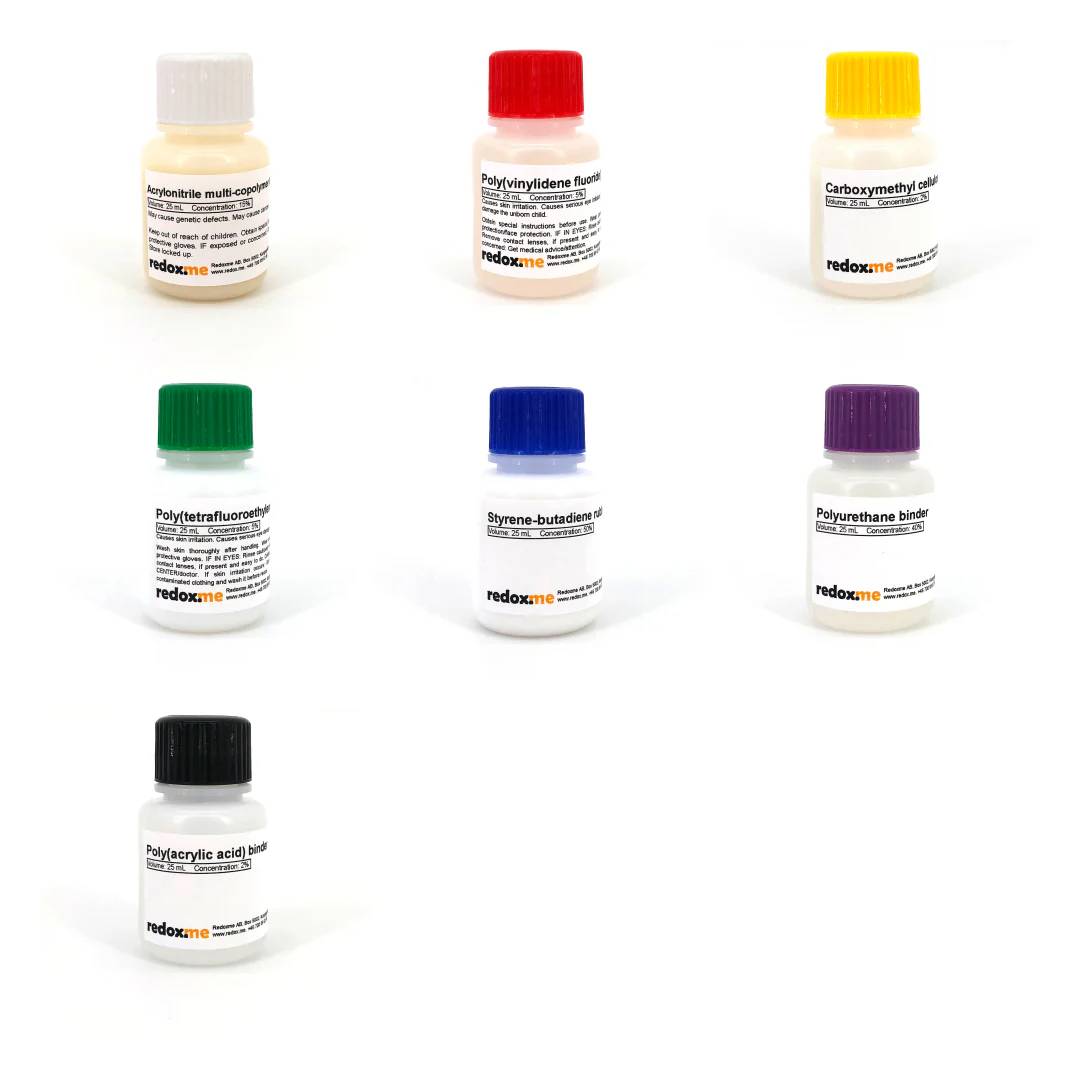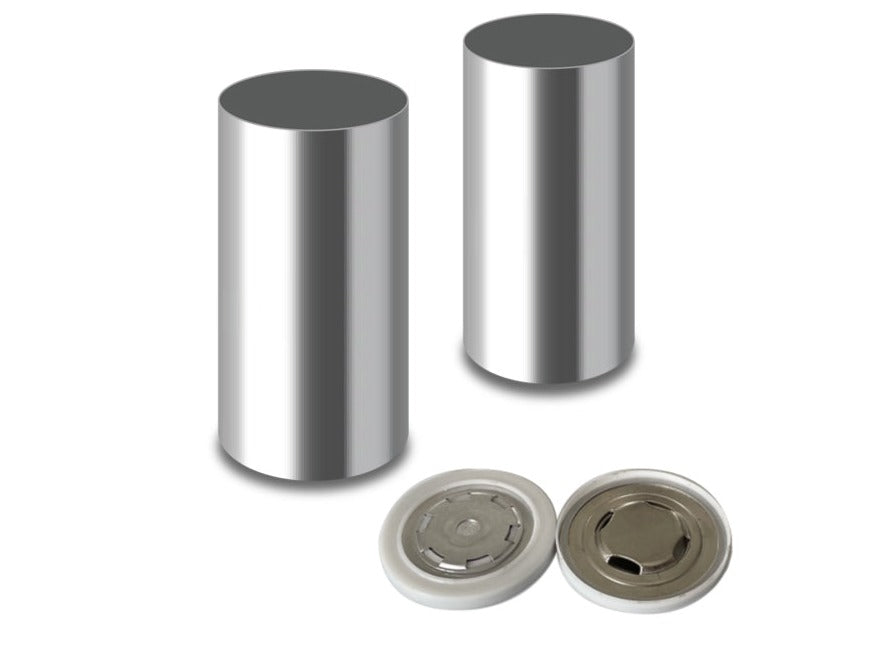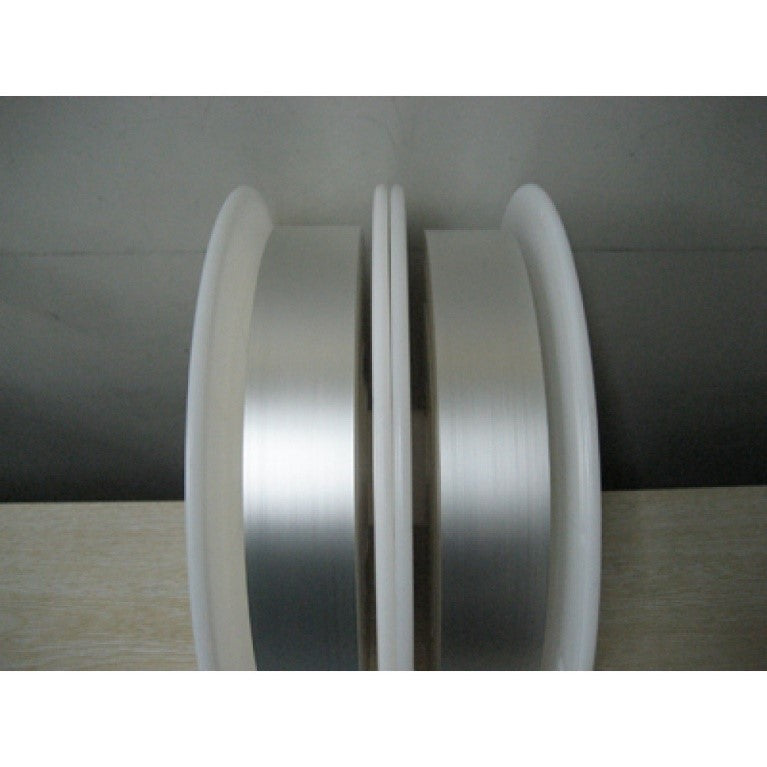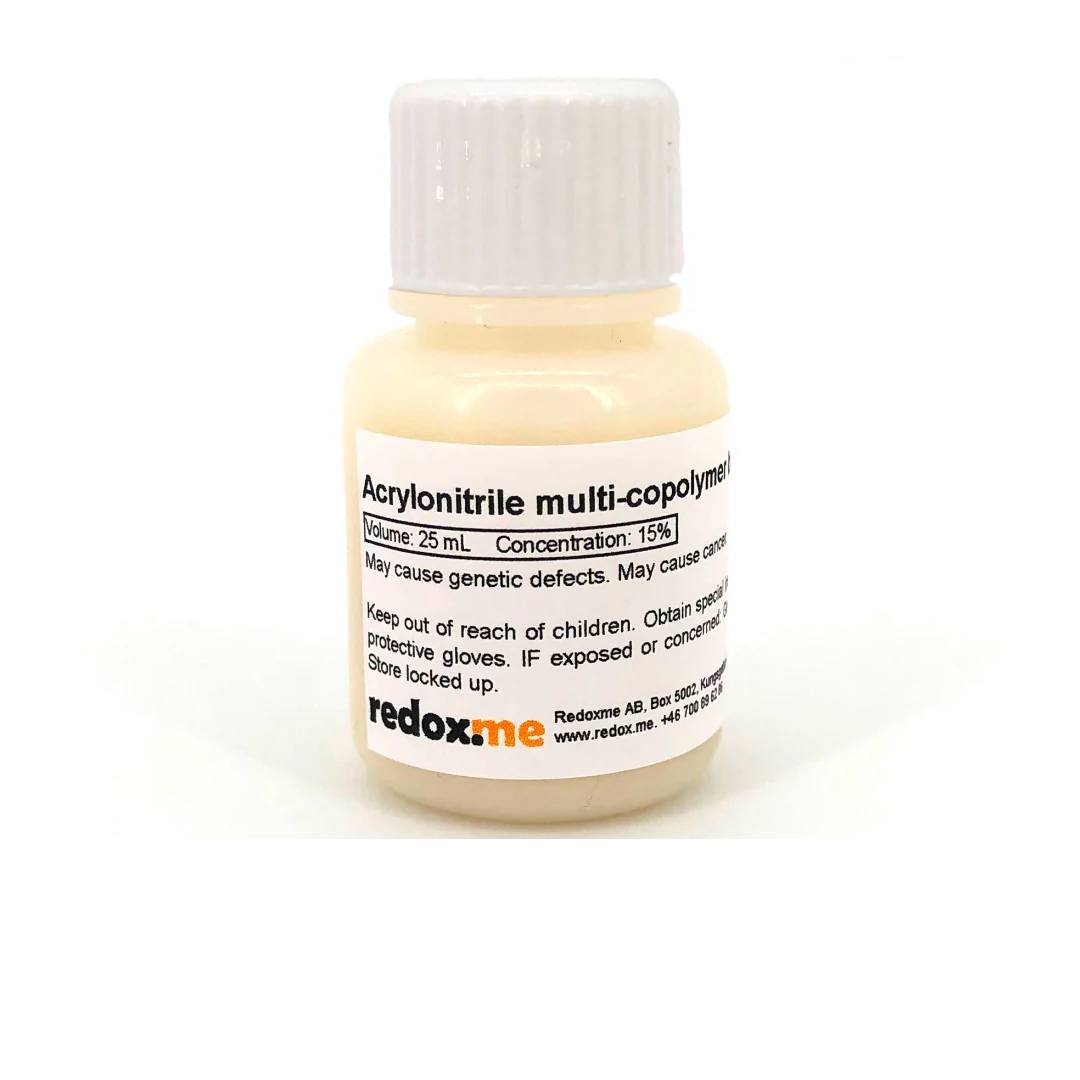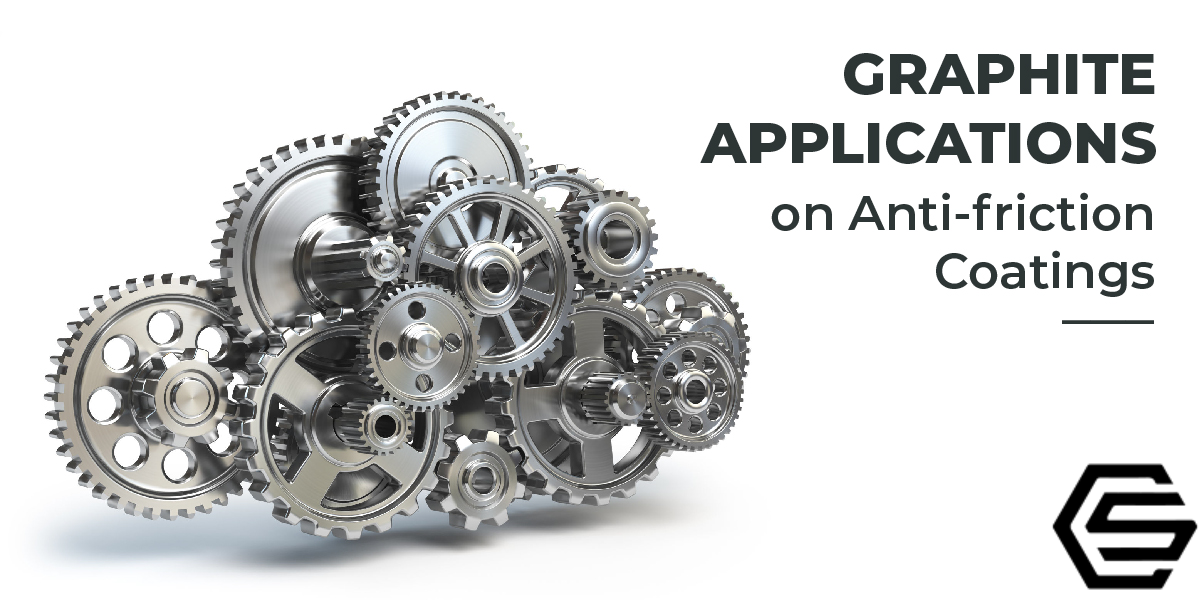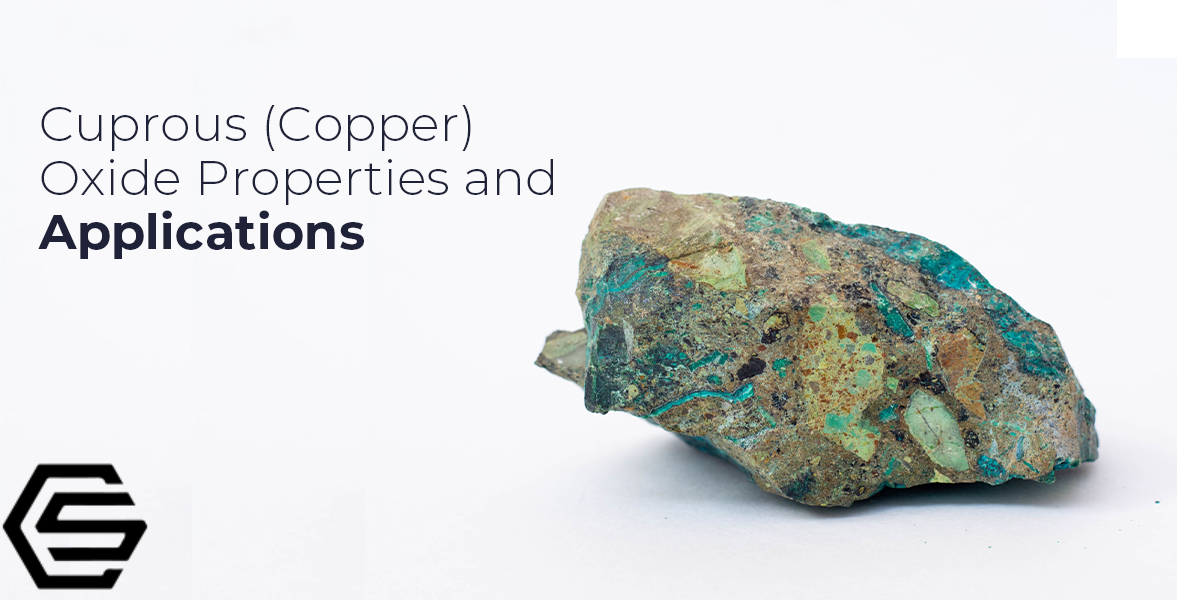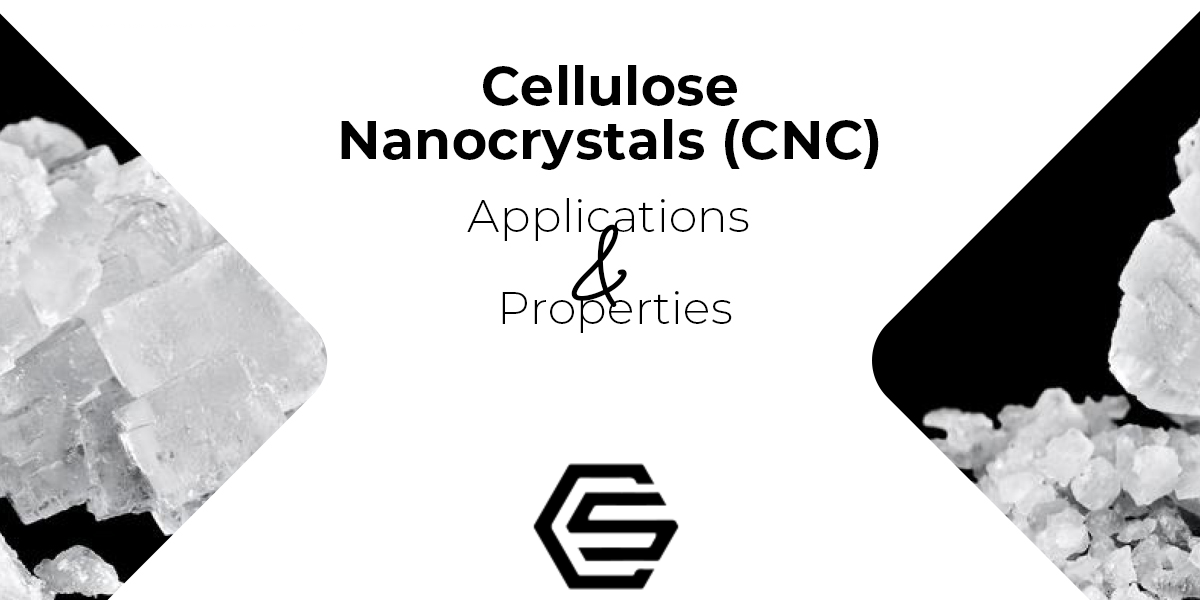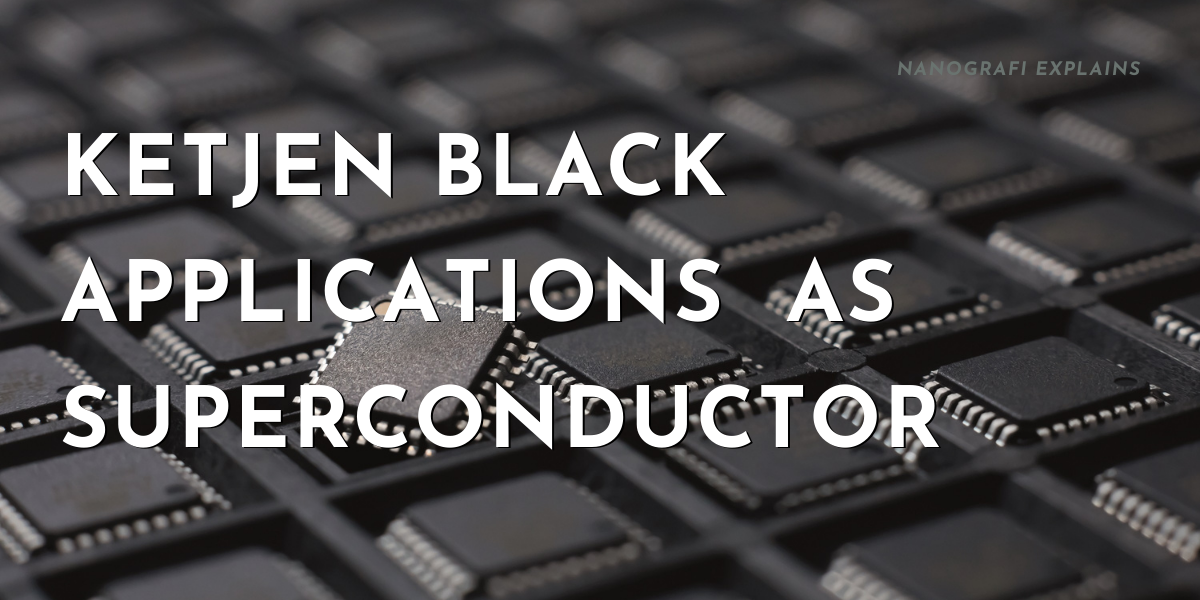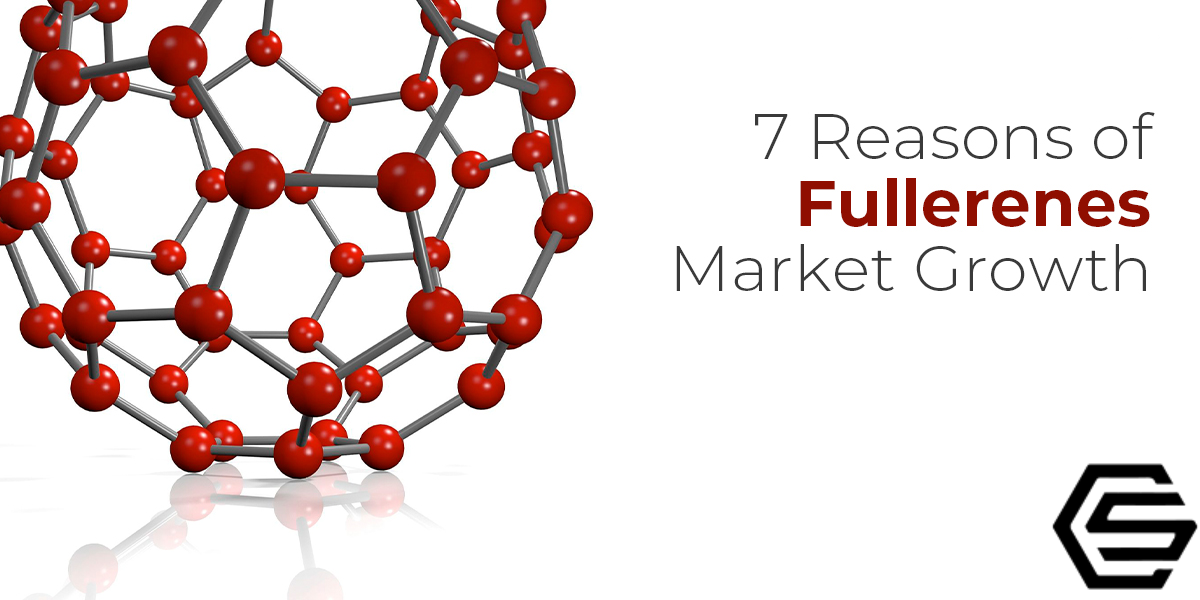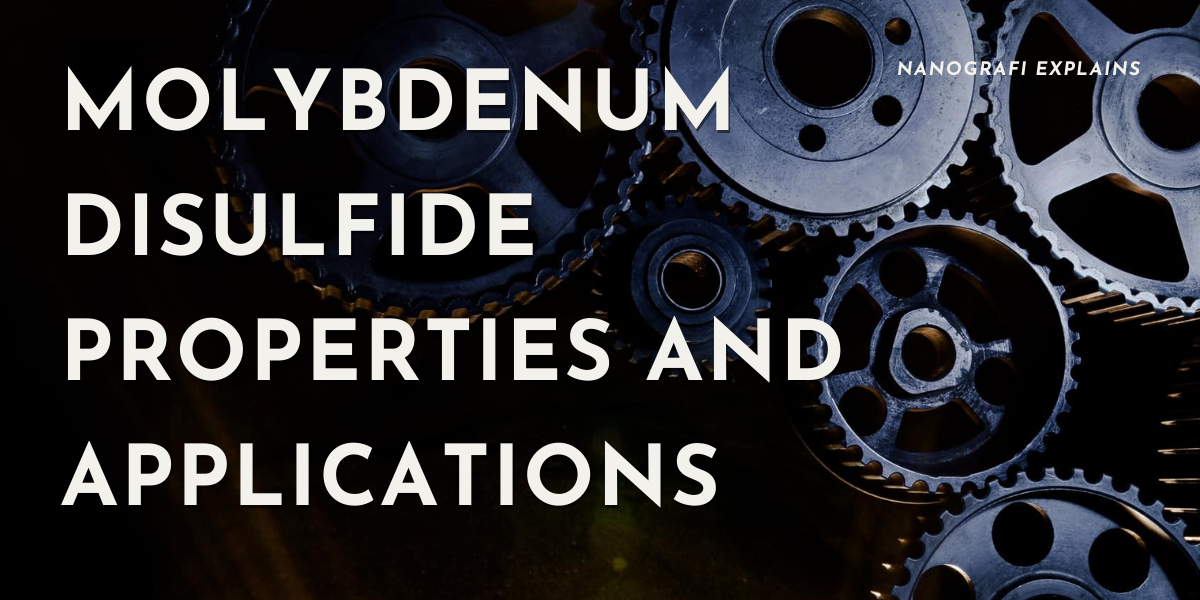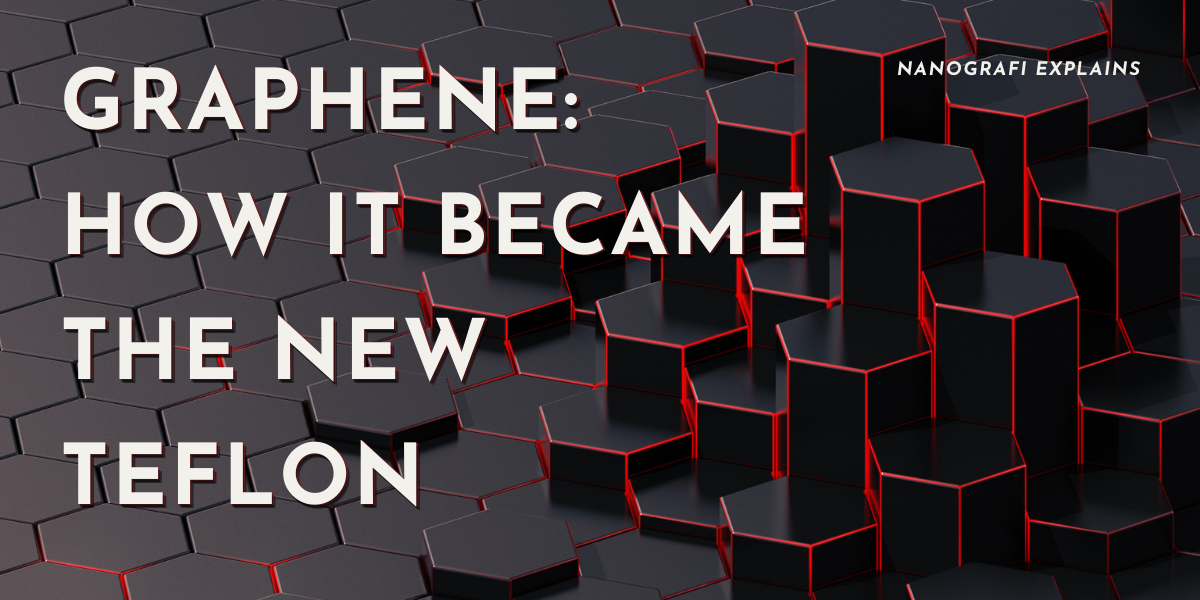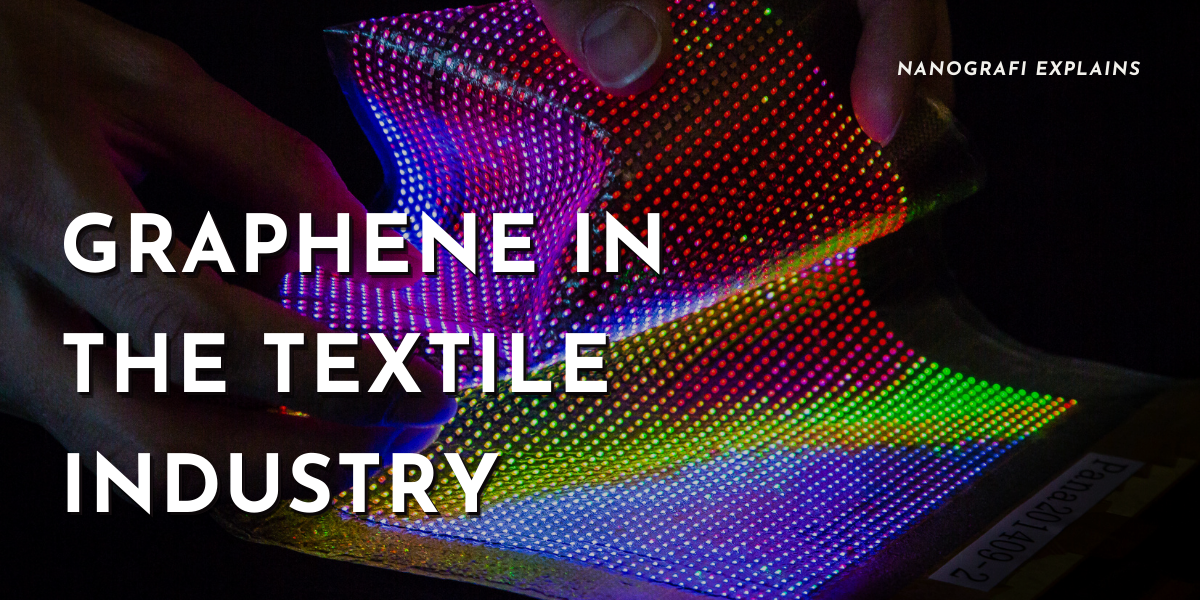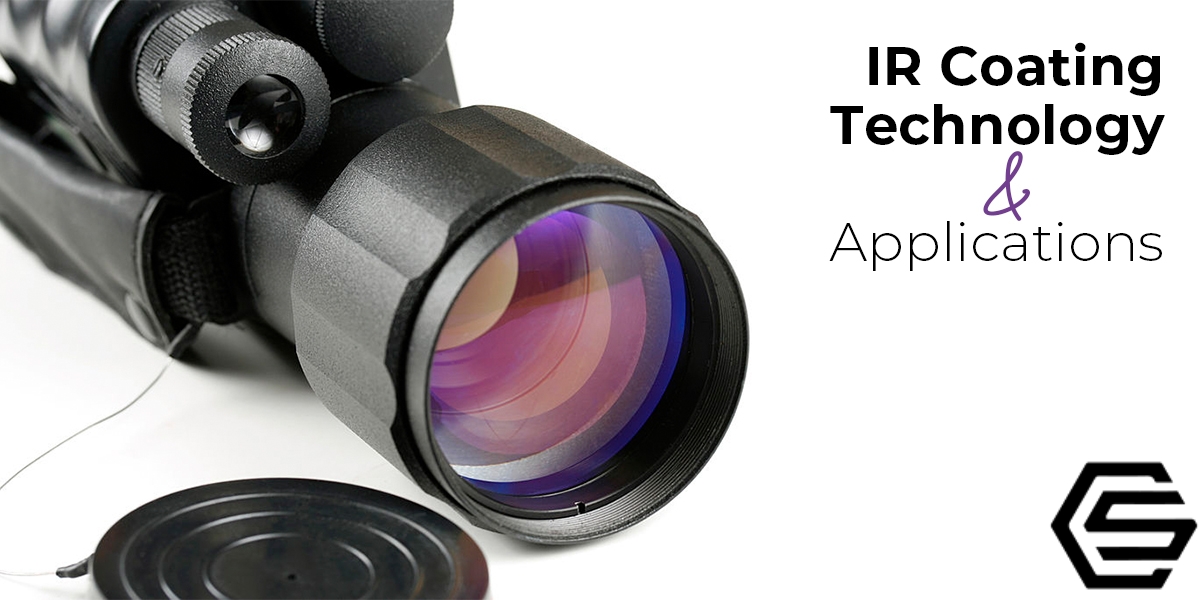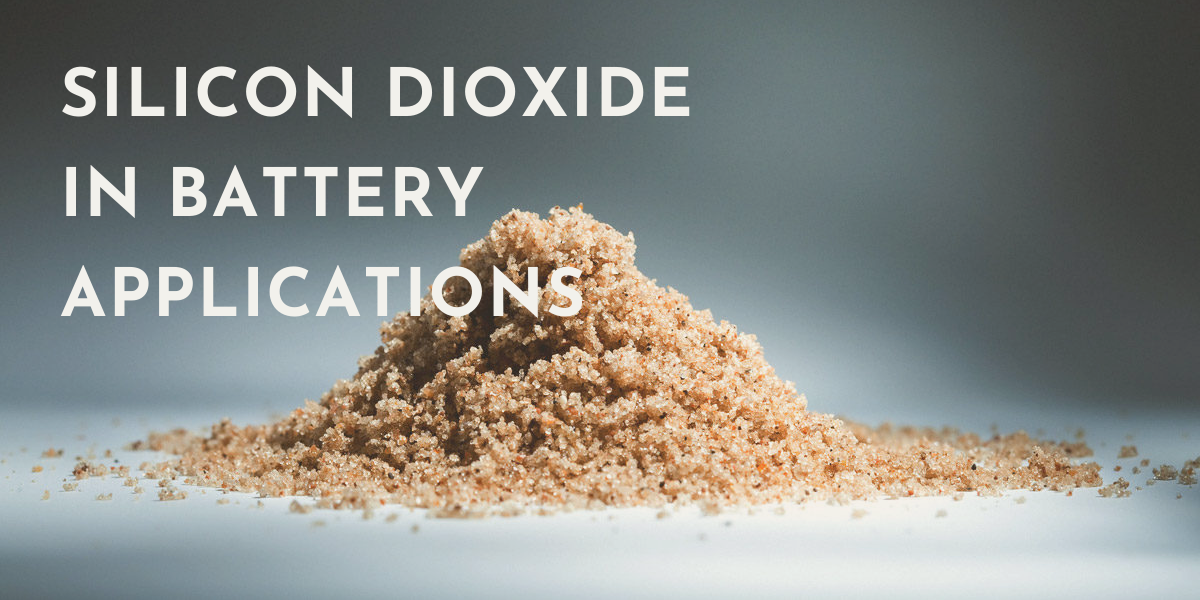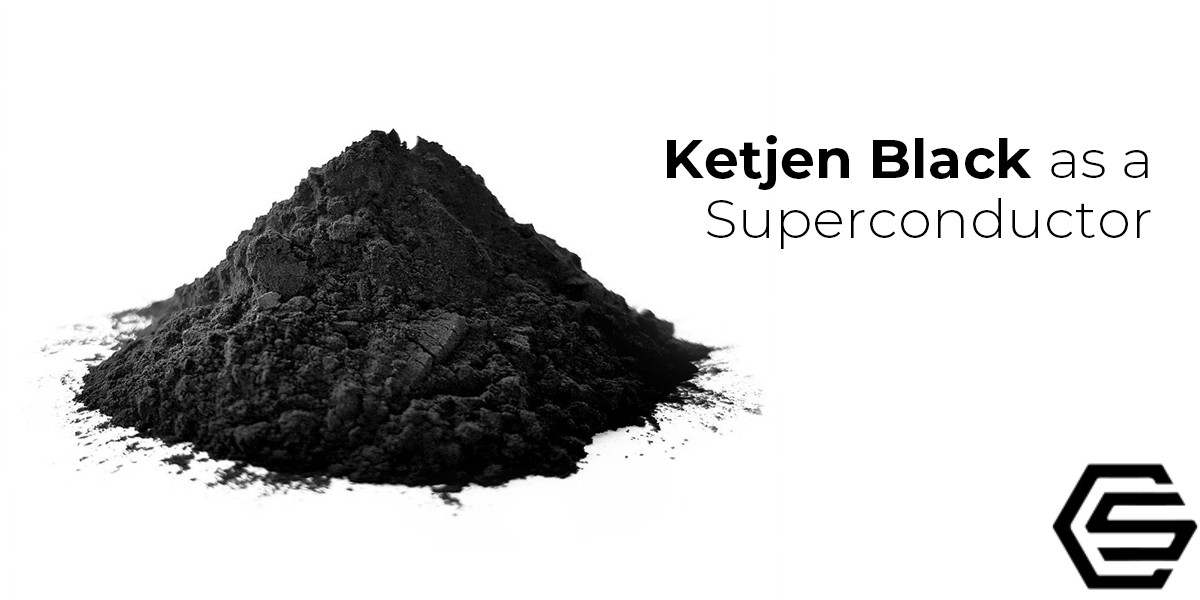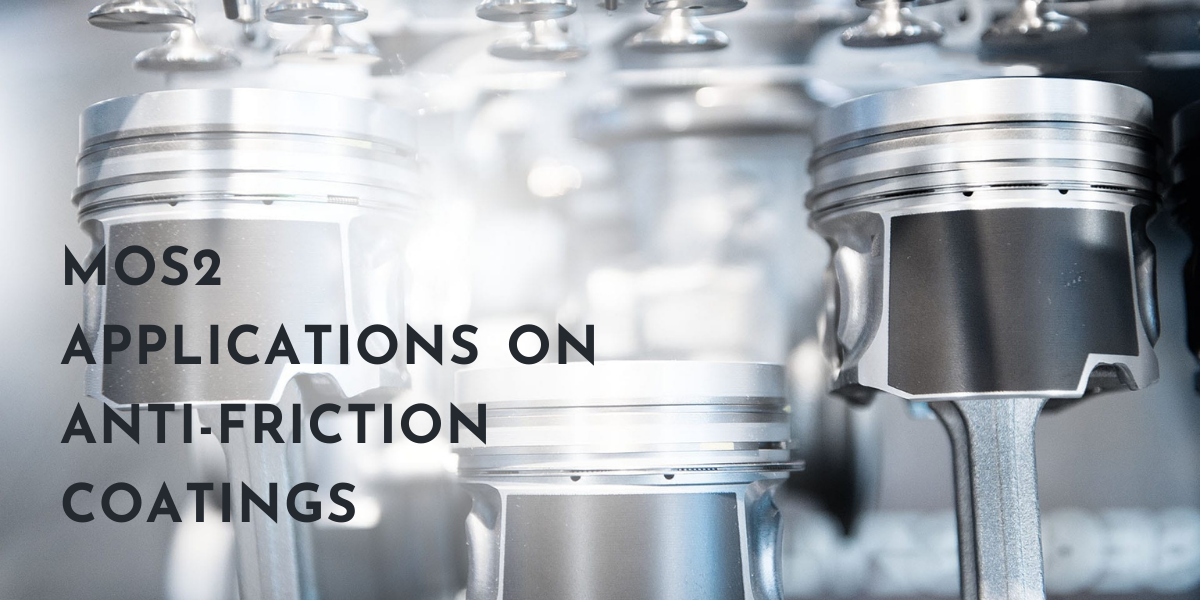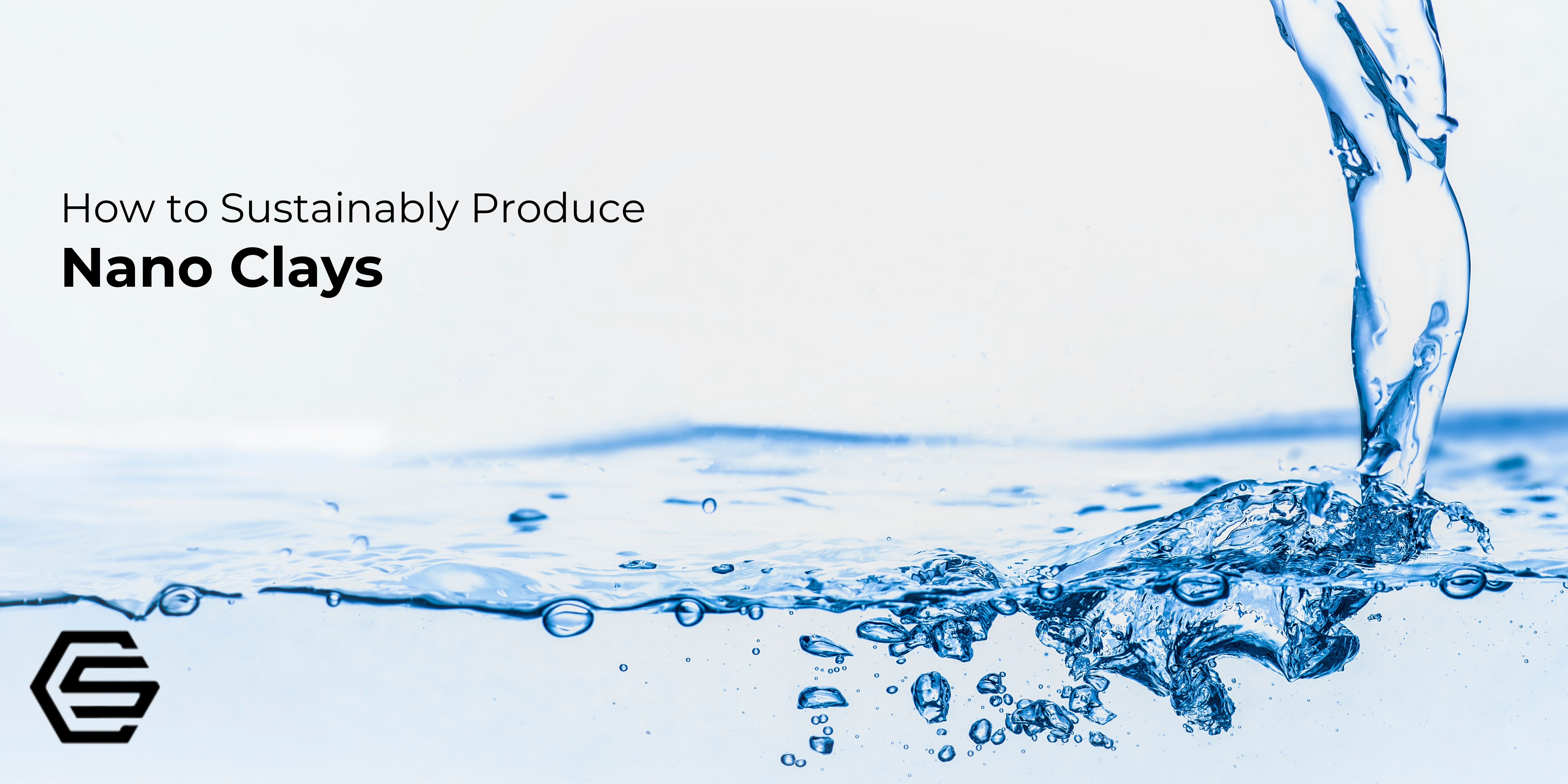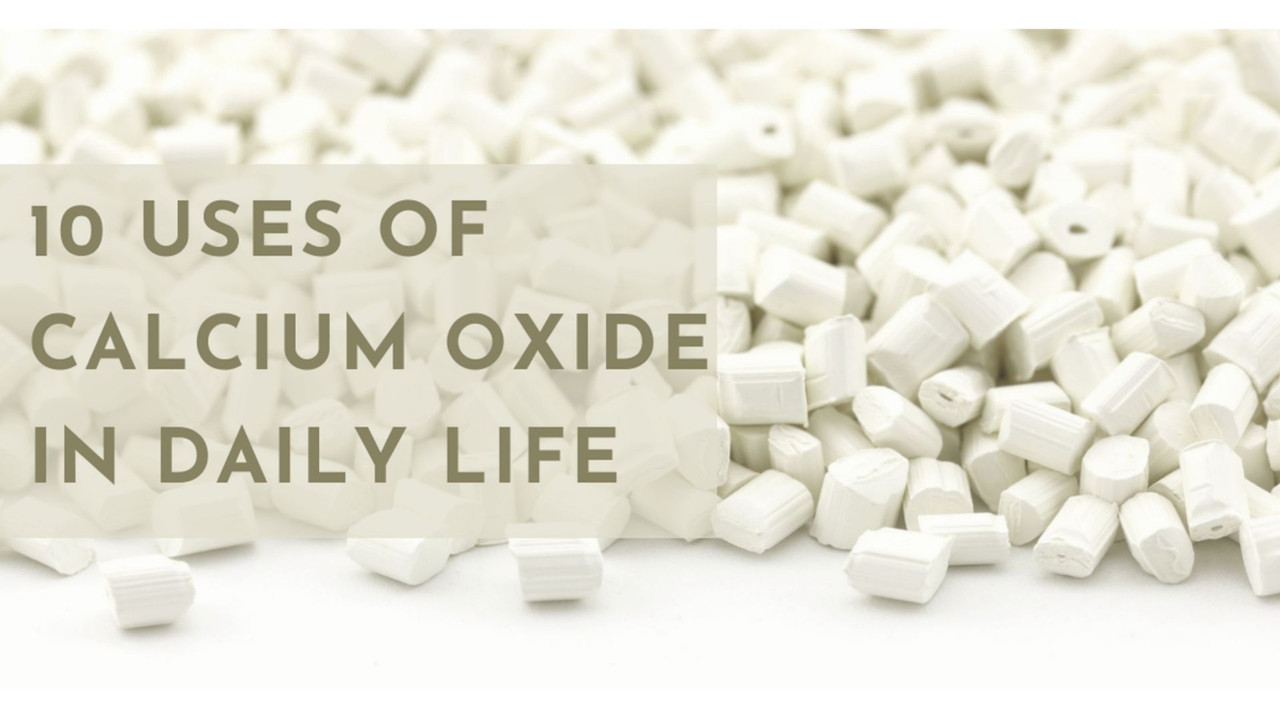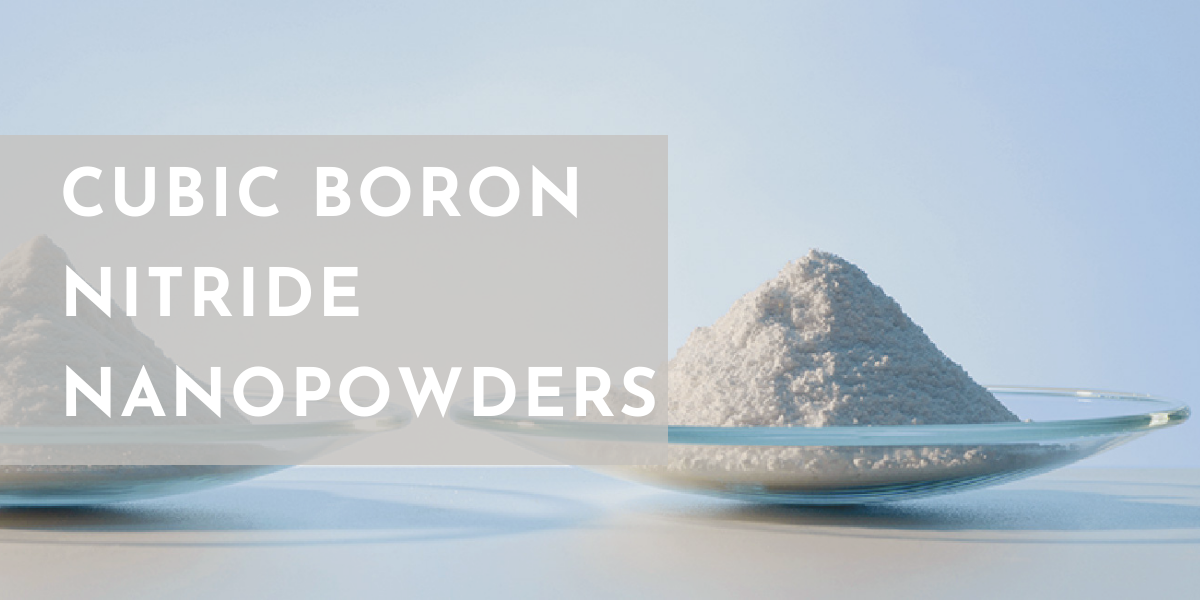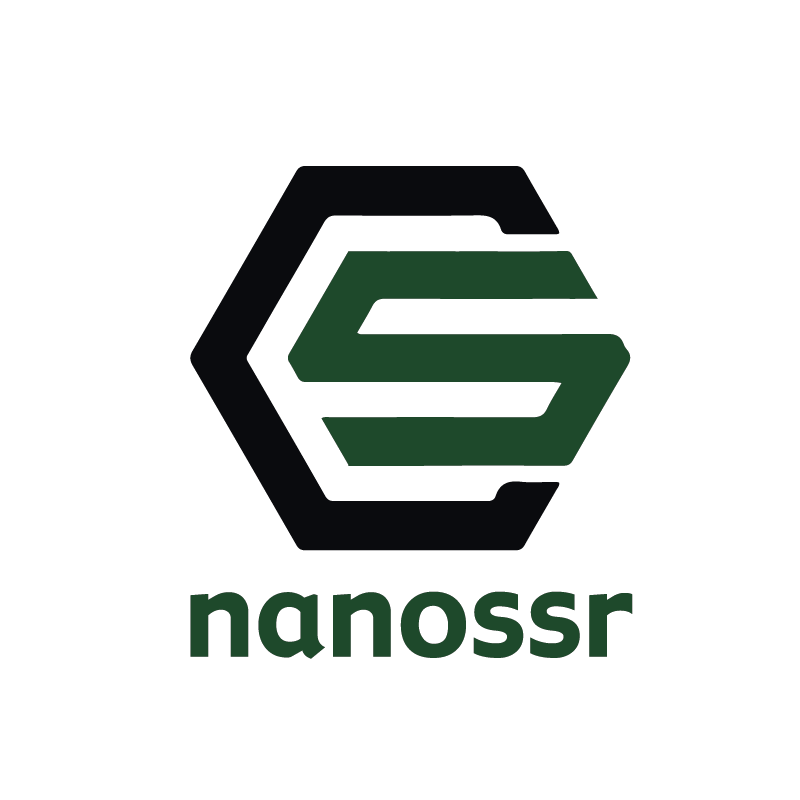Binder kit - 7 x 25 ML
Buy Redox.me products from NANOSSR at the best value.
Binders used in functional coatings (e.g. electrodes) act as ‘glue’, which secures the active material to current connector and keeps its structural integrity. The choice of suitable binder is not straight forward, and many researchers struggle to find the most suitable polymer for their application. This binder kit consists of 7 common compositions used in coatings for various applications (25 mL each), particularly in electrochemistry and energy storage/conversion (thin-film electrodes, batteries and supercapacitors, photovoltaic cells). The wide selection of polymers allows to test and compare several binders without the need of purchasing large quantities of singular products. Depending on composition, the binder kit can be used for both aqueous and organic environments to make free-standing film/membrane or thin/thick film coating on current collector. Other quantities are available on request.
Application note
- The binders are provided as liquid solutions/dispersions/emulsions with specific concentration. The appropriate binder is thoroughly mixed with the active material, where ratio can range from 30:70 to 1:99, respectively, depending on application, active material, additives etc. If necessary, the mixture can be diluted with appropriate solvent to achieve required viscosity. The resulting slurry is coated on current collector (e.g. doctor blade) and dried (usually at 80°C) in vacuum or ambient environment. This binder kit consists of 7 common compositions:
- Acrylonitrile multi-copolymer binder (LA133) – Water dispersion of acrylonitrile multi-copolymer used in battery industry. It is comparable to SBR binder, but benefits from better electrochemical stability and no need of additional thickeners. Water is used to dilute the mixture if necessary.
- Poly(vinylidene fluoride) binder (PVDF) – One of the most common binders, used for example in cathodes for Li-ion batteries, which can be used as benchmark for comparisons. Dissolved in N-methyl-2-pyrrolidone (NMP). Use NMP to dilute if necessary.
- Carboxymethyl cellulose binder (CMC) – Popular thickener used in number of industries, including commercial anodes for Li-ion batteries. It can be used as sole binder or as a thickener for SBR for adjusting the viscosity. Non-toxic solution in water is easily processable and can be further diluted with water if needed.
- Poly(tetrafluoroethylene) binder (PTFE) – Characterises with very good chemical and temperature stability. Recommended for free-standing electrodes. PTFE emulsion is mixed with active material and other additives in mortar to form a paste, which can be rolled into sheet of desired thickness. Ethanol is used to adjust viscosity if necessary. The water is removed after drying at 120° To remove wetting agent dry at 270°C. For best mechanical properties, sintering of PTFE particles at 340°C can be performed.
- Styrene-butadiene copolymer (SBR) – Benefits from high flexibility. Add thickener to adjust viscosity (e.g. CMC or PAA). It is added to the slurry after other ingredients are thoroughly mixed. Not recommended to use in cathode due to oxidation at high voltage.
- Polyurethane binder (PU) – This aqueous emulsion of polyurethane characterises with very good mechanical properties, high temperature resistance and wide voltage electrochemical stability. Water is used to dilute the mixture if necessary. To increase viscosity thickener (CMC) can be added as required. The recommended drying temperature is 120° The crosslinking occurs under UV radiation, therefore avoid sunlight in storage.
- Poly(acrylic acid) binder (PAA) – Water-soluble polyacrylate binder with high number of functional groups. Particularly, carboxyl groups can form strong hydrogen bonds with both active material and current collector. Water is used to dilute the mixture if necessary. It is strongly recommended to degas the slurry before coating.
Specification
Acrylonitrile multi-copolymer
solvent: water
concentration: 15% (w/v)
electrolyte compatibility: organic
Safety Data Sheet
Poly(vinylidene fluoride)
solvent: N-methyl-2-pyrrolidone
concentration: 5% (w/v)
electrolyte compatibility: organic and aqueous (non-alkaline)
Mw: ~1,000,000
Safety Data Sheet
Carboxymethyl cellulose
solvent: water
concentration: 2% (w/v)
electrolyte compatibility: organic
Mw: ~400,000
D.S.: = 0.8
Safety Data Sheet
Poly(tetrafluoroethylene)
solvent: water (emulsion)
concentration: 60% (w/v)
electrolyte compatibility: organic and aqueous
Safety Data Sheet
Styrene-butadiene copolymer
solvent: water (emulsion)
concentration: 50% (w/v)
electrolyte compatibility: organic
compounds: Styrene - 24-26 %, Butadiene - 71-73 %
Safety Data Sheet
Polyurethane
solvent: water (emulsion)
concentration: 40% (w/v)
electrolyte compatibility: organic and aqueous
Safety Data Sheet
Poly(acrylic acid)
solvent: water
concentration: 2% (w/v)
electrolyte compatibility: organic
Safety Data Sheet


